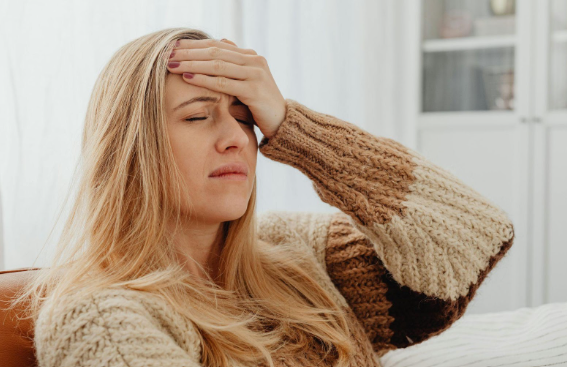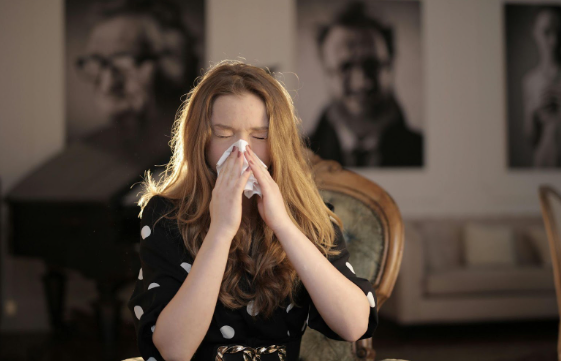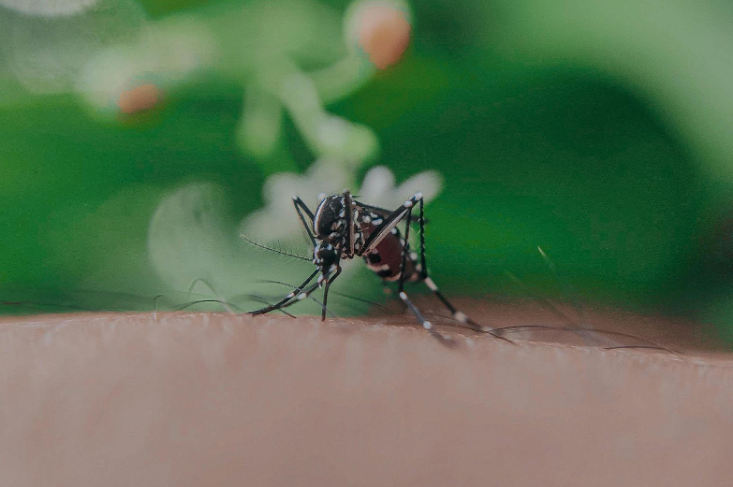May 1, 2025
Identifying and Managing Fall-Induced Migraines
Identifying and Managing Fall-Induced Migraines

Migraines are a complex neurological condition that affects millions of individuals worldwide, and their onset can be influenced by seasonal changes. For many people, autumn is a particularly challenging time. As the crisp air sets in, daylight hours shorten, and atmospheric conditions fluctuate, migraines can become more frequent or severe. Understanding the specific factors that make fall a trigger season—and learning effective management strategies—can help individuals maintain better control over their symptoms.
Understanding Fall-Induced Migraines
Migraines are rarely random, and for many people, the change of seasons plays a surprisingly powerful role in when and how often they occur. Fall, in particular, brings a unique mix of environmental shifts—cooler air, shorter days, and fluctuating weather patterns—that can set off a chain reaction in the body’s neurological and vascular systems. Recognizing this seasonal connection is the first step toward preventing migraines before they disrupt your life.
The Role of Seasonal Changes in Migraine Triggers
Seasonal migraines are often the result of environmental shifts that influence the body’s neurovascular system. In fall, several triggers converge. The decrease in barometric pressure during weather changes can affect intracranial blood vessels, leading to dilation and inflammation—two processes associated with migraine onset. Additionally, reduced sunlight exposure impacts serotonin and melatonin regulation, disrupting sleep patterns and mood, both of which can contribute to migraine frequency.
Temperature fluctuations also play a role. The transition from warm to cooler weather can cause constriction of blood vessels in the skin and extremities, potentially impacting blood flow to the brain. Coupled with the increased likelihood of dehydration in cooler months—when people often drink less water—these physiological changes can set the stage for migraine episodes.
Recognizing the Symptoms Unique to Seasonal Migraines
While the core symptoms of migraines—throbbing head pain, sensitivity to light and sound, nausea, and visual disturbances—remain consistent year-round, fall-induced migraines may present with distinct patterns. Many patients report headaches that coincide with sharp drops in temperature or sudden weather shifts. Others experience more severe morning migraines during this season due to disruptions in circadian rhythm from shorter daylight hours.
Some individuals also find that fall allergies exacerbate migraine symptoms. Ragweed pollen and mold spores, which are prevalent in autumn, can trigger inflammation in the nasal passages and sinuses, potentially contributing to migraine onset or worsening existing pain.
Identifying Your Personal Migraine Triggers in Fall
One of the most effective steps toward managing fall-induced migraines is identifying your personal triggers through consistent tracking. A seasonal migraine diary should record the date, time, weather conditions, meals consumed, stress levels, and sleep quality before a migraine occurs. Over several weeks, patterns often emerge that highlight specific fall-related triggers, such as particular foods, allergens, or changes in barometric pressure.
Understanding the Connection Between Allergies and Migraines
In fall, allergic rhinitis can lead to nasal congestion and sinus pressure, which, for some, overlaps with migraine activity. Differentiating between sinus headaches and migraines is essential for accurate treatment. Unlike sinus headaches, migraines often involve neurological symptoms such as aura, dizziness, or tingling sensations. Recognizing this difference ensures that patients pursue migraine-specific therapies rather than solely relying on allergy medications, which may not address the underlying cause.
Managing Fall-Induced Migraines Effectively
Managing migraines caused during the fall season can be done effectively by:
Medical Interventions and Preventive Therapies
For individuals with frequent or debilitating migraines during fall, consulting a healthcare provider is essential. Preventive medications, such as beta-blockers, anticonvulsants, or CGRP inhibitors, may be prescribed for those with chronic symptoms. For acute attacks, triptans or nonsteroidal anti-inflammatory drugs (NSAIDs) can help alleviate pain if taken early in the migraine phase.
In some cases, providers recommend neuromodulation devices—non-invasive tools that deliver electrical or magnetic pulses to specific nerves involved in migraine pain. These can be particularly beneficial for individuals who want to minimize medication use or for those with medication-resistant migraines.
Lifestyle Adjustments for Seasonal Migraine Relief
While medical treatments are important, lifestyle modifications play a critical role in reducing migraine frequency during autumn. Maintaining a consistent sleep schedule, even on weekends, helps stabilize circadian rhythms. Staying hydrated, despite cooler weather, prevents dehydration-related headaches.
Dietary awareness is also key. Foods such as aged cheeses, processed meats, and certain artificial sweeteners are common migraine triggers. During fall, comfort foods and holiday treats may contain these ingredients, making mindful eating essential.
Exercise remains a valuable preventive measure, as it promotes circulation, releases endorphins, and reduces stress. However, outdoor activities in cooler weather should be approached with caution—wearing layers to maintain body temperature can help prevent sudden chills that may trigger an attack.
The Importance of Weather Awareness
Weather awareness is important for:
Monitoring Barometric Pressure Changes
Because fall weather can shift rapidly, individuals prone to migraines benefit from monitoring local forecasts and barometric pressure trends. Smartphone applications can provide alerts when significant pressure changes are expected, allowing migraine sufferers to prepare by adjusting hydration, rest, and medication timing accordingly.
Planning Activities Around Trigger Conditions
If low-pressure systems or drastic temperature drops are forecasted, it may be wise to limit outdoor activities or avoid environments with additional triggers, such as strong scents or bright lights. Creating a migraine-safe space at home with dimmable lighting, quiet surroundings, and access to medications can provide a refuge during high-risk periods.
Emotional and Psychological Considerations
Seasonal Affective Disorder and Migraines
Fall’s shorter daylight hours not only affect serotonin levels but can also contribute to Seasonal Affective Disorder (SAD), a form of depression that arises with reduced sunlight exposure. The link between mood disorders and migraines is well-documented; individuals with depression or anxiety are more likely to experience frequent migraines. Addressing mental health through counseling, light therapy, or antidepressant medication can therefore indirectly reduce migraine frequency.
Stress Management Techniques
Fall often coincides with an increase in work demands, school schedules, and upcoming holiday preparations—all of which can heighten stress levels. Stress is a known migraine trigger, making proactive stress management essential. Practices such as mindfulness meditation, yoga, and controlled breathing can help regulate the body’s stress response and reduce the likelihood of migraine onset.
When to Seek Medical Help
While occasional migraines can often be managed with lifestyle adjustments and over-the-counter remedies, certain warning signs indicate the need for immediate medical evaluation. These include sudden, severe headaches unlike previous migraines, migraines accompanied by neurological symptoms such as confusion or difficulty speaking, or headaches following head injury. Timely assessment ensures that serious conditions such as stroke or aneurysm are ruled out.
Individuals whose migraines increase significantly in frequency or severity during fall should also consult a specialist. Neurologists can provide comprehensive treatment plans, including advanced imaging or specialized therapies, to address seasonal migraine patterns.
Long-Term Strategies for Migraine Prevention
The most successful migraine management plans often combine medical treatment with holistic practices. Acupuncture, biofeedback, and cognitive behavioral therapy (CBT) have all shown promise in reducing migraine frequency and improving quality of life. Consistency is key; by addressing both the physiological and lifestyle factors involved, individuals can create a sustainable approach to migraine prevention.
Because fall-induced migraines are predictable for many sufferers, preparation before the season begins can be beneficial. This might include scheduling preventive treatments in late summer, stocking up on necessary medications, and adjusting daily routines to account for upcoming weather changes.
If seasonal changes are triggering more frequent or severe migraines, you don’t have to navigate the challenges alone. At
Bayou Bend Health System, our dedicated medical team specializes in diagnosing, treating, and managing migraines with a personalized approach. We combine advanced medical therapies with patient-focused lifestyle guidance to help you enjoy the fall season without being sidelined by pain.
Schedule your appointment today and take the first step toward long-term migraine relief.



